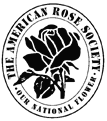 ARS Pacific Northwest District
ARS Pacific Northwest District
Garden Design 101I finally figured out the best reason to win the lottery if youíre a gardener. You can afford to design, build and plant all your gardens at one time. I had a 5-year plan to landscape my new home;, to do this I started reading books on the subject, then I got involved in the Rose Society and found out the astounding variety of color, fragrance and growth habit this amazing flower has and decided to incorporate roses with other flowers. Now in my 11th year of designing and re-designing, I thought Iíd share some of the information Iíve discovered about using roses in a landscape. If I had known about some of this at the beginning of my plan I might not still be redoing. You have no idea how glad I am I have a cousin who said when I bought this place, ďIíll be happy to help you get the landscaping done.Ē Selecting the right roses for your garden may seem like an almost impossible task since there are so many different varieties, but Iíve discovered that the research is half the fun. Actually, more than half, because itís a lot less work. One thing I have discovered is that plants need to be chosen for specific uses. You may want to exhibit, or you may just enjoy roses for their beauty and want to have lots of cutting flowers. In either case, select roses that grow well in our area and are relatively disease free. If you donít want to do much spraying, there are some old garden varieties that donít even like to be sprayed. What Iím having fun with now is color. Hybridizers have increased the color selection to every color of the rainbow except true blue and black (not a rainbow color the last time I looked). There even is a green rose called R. chinensis viridiflora. The flowers can be solid colored, bi-colored, or blends. I started out just buying roses that other people recommended, but lately Iíve realized that in order to have a harmonious garden you should stick to a color theme. If you choose the colors you love, you project your personality and create an environment in which you feel comfortable. A color scheme of red, orange, and yellow creates a happy and cheerful feeling. A garden with this scheme will also look smaller and feel warm if planted near a seating area, which can be a good thing in our moderate climate. For relaxing, try a cool color scheme of violets, mauves, and purple. Cool color schemes also make an area look larger. You probably remember the basics of the color wheel from art classes in school. You can use the wheel to create harmonious colors in the garden. Colors opposite on the wheel are complementary. For instance, purple and yellow are attractive together, but they make a strong statement and may be too overpowering. An alternate choice might be lighter yellow with lavender, which is a softer combination. If you have a garden that mixes a lot of strong colors together you can bring in a unifying influence by planting a white edging. Last year I planted white alyssum all around the edge of an island bed with different colors and was quite pleased with the result. Something about the brightness of white makes it a common denominator. However, the downside of that is that by using white flowered plants here and there you get a spotty effect. White should always be mass planted. Like a lot of rose growers I started out by wanting to grow as many different varieties and colors as possible. Itís possible to work with a wide palette of colors by trying to arrange them in progression, or use different color schemes in different areas of the garden. This is the direction Iím taking so I can still use all of the plants I already have. However, I need to add more plants of the same varieties or color families so that I get small masses of color in an area and avoid a patchwork look. As a last challenge Iím trying to situate fragrant varieties near the front walk and seating areas where they can be enjoyed by my guests. I think itís possible to incorporate exhibition growing with lovely gardens. I figure by the end of the next 5 years Iíll be able to tell how well it worked out. Articles Home Updated
July 02, 2004 |